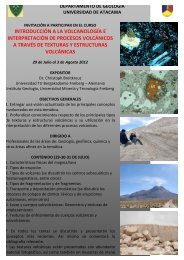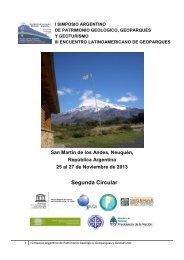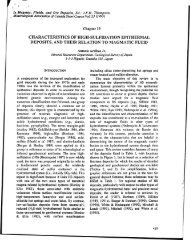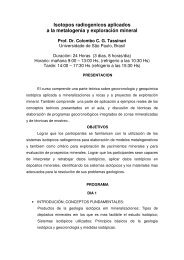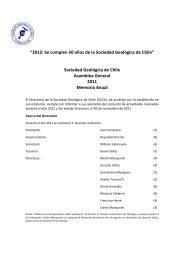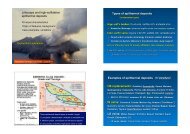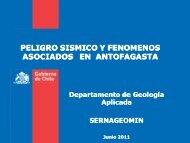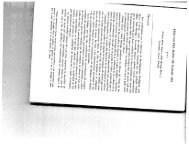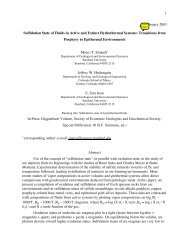Lithocap Structure-controlled feeder zone Lithology-controlled ...
Lithocap Structure-controlled feeder zone Lithology-controlled ...
Lithocap Structure-controlled feeder zone Lithology-controlled ...
You also want an ePaper? Increase the reach of your titles
YUMPU automatically turns print PDFs into web optimized ePapers that Google loves.
Early convecting magma (30 -<br />
50 % crystals), flux ~ equal to<br />
White Island quiescent eruption<br />
Later stagnant magma,<br />
slow crystallization =<br />
Low rate of fluid advection, fluid<br />
rises slowly and loses heat, such<br />
that it does not intersect solvus<br />
Lower temperature, brittle<br />
conditions at shallow depth<br />
Late stagnant magma (>50%<br />
crystals, advective flux sharply<br />
decreases ~ 10x<br />
Creation of the phyllic<br />
(muscovite, “sericite”) stage<br />
Shinohara & Hedenquist, 1997<br />
Effect on fluid exsolution,<br />
advection, and nature of fluid<br />
ascent?<br />
Early magmatic fluid =<br />
Hot, plastic, lithostatic P (potassic,<br />
A veins)<br />
Rapid ascent, intersection of<br />
solvus, forms brine plus vapor<br />
Later magmatic fluid =<br />
Cooler, brittle, hydrostatic P<br />
(muscovite, D veins)<br />
Critical fluid never intersects<br />
solvus due to slow ascent and<br />
cooling<br />
Normal progression of exsolving<br />
magma chambers, magma<br />
convection early (fast<br />
crystallization), to later stagnant<br />
xstallization (conductive heat loss)<br />
Shinohara and Hedenquist, 1997;<br />
Hedenquist et al., 1998<br />
Chang et al., 2011




